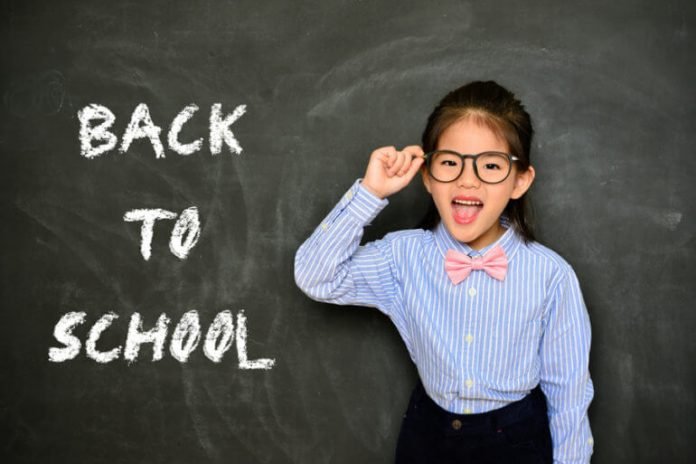The vision is linked to school performance. Taking your child to the ophthalmologist is an excellent way to start the course off on the right foot.
On the way back to school, the rush and races increase due to having books, uniforms, notebooks ready… everything seems to us little for the children to start the course motivated and with everything ready for the course to go well. However, according to the figures handled by specialists, we are not as zealous when it comes to the visual health of children.
Also Read: Improve your health with these 10 nutritional tips
According to their estimates, 25% of schoolchildren in our country have some type of visual problem. These anomalies are related to a third of cases of school failure. Furthermore, experts remember that vision not only plays an essential role in academic achievement; also in sports performance and in the integration of children in children’s games and activities.
Vision in the school environment
The information we receive from our environment through sight is essential to channel children’s learning, not only at school, but in everyday life. On the other hand, in classrooms, it is necessary for the student to see correctly to learn to read, to see the blackboard well and to the teacher when he explains, to develop writing … but also, the sense of sight helps the development of psychomotricity Fine and improve eye-hand coordination.
Also Read: Diabetic foot, how to care for this diabetes complication
These two factors are, in turn, important for manual work (cutting, molding, coloring, assembling figures …) and to develop the necessary skills for a good performance in Physical Education class and in the games that are carried out. at recess (coordination, lateral vision, visual acuity, aim …).
For this reason, it is common for students with vision problems who have not yet been diagnosed to not only perform less at school. In addition, they do not develop a taste for reading and, aware of their limitations, they isolate themselves when participating in activities that require a correct view of the field of play, signs and the position of their peers …
The good thing is that both refraction problems (myopia, astigmatism and hyperopia) as lazy eye (amblyopia) and even strabismus have an easy solution once the specialist has detected the problem and prescribes the appropriate solution (glasses, patches …) .
How to identify children’s visual problems?
- The child squints or winks when he has to look up at the blackboard or attend to the teacher’s explanations.
- He complains of headaches or blurred vision, especially at the end of the school day or doing homework.
- He is too sensitive to light and has trouble adapting his vision in dark environments.
- He gets very close to paper when he writes and books to read; sometimes you have to frown to read. He tires quickly from reading and reads too slowly for what would be normal for his age. Also, you may have to follow the lines with your finger to avoid skipping the lines or eating the words.
- He tends not to participate in sports that require aim, precision or special attention to the movements of his teammates. He is hit by balls or stumbles and falls easily at recess or in Physical Education class, since it is difficult to calculate the distances, he does not have enough visual acuity and he does not clearly appreciate the edges of goals, baskets, rings or delimited spaces in the games and sports.
- You sit too close to the television.
- He blinks very frequently and his eyes are watering.
- He does not focus his eyes precisely on what is pointed out to him.
Given the importance of vision in the school and personal performance of children, specialists advocate taking advantage of going back to school to take them to the ophthalmologist and start the course on the right foot. Likewise, they advise to be attentive to the signs described and suggest that special care be taken in the assessment of children who suffer from learning problems in case they could be related to vision problems.
Contrary to what many people think, it is not necessary to wait for the little one to learn to read to take him to the ophthalmologist, since specialists have many resources based on colored figures, vignettes, drawings, puzzle pieces … adequate to assess the vision of children who are still too young to distinguish letters.











